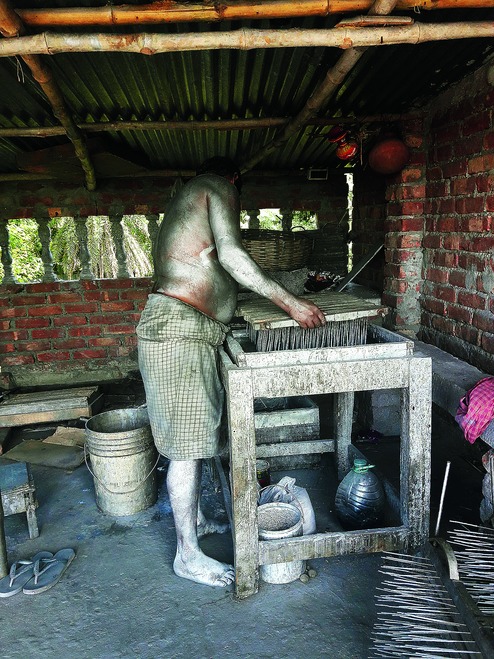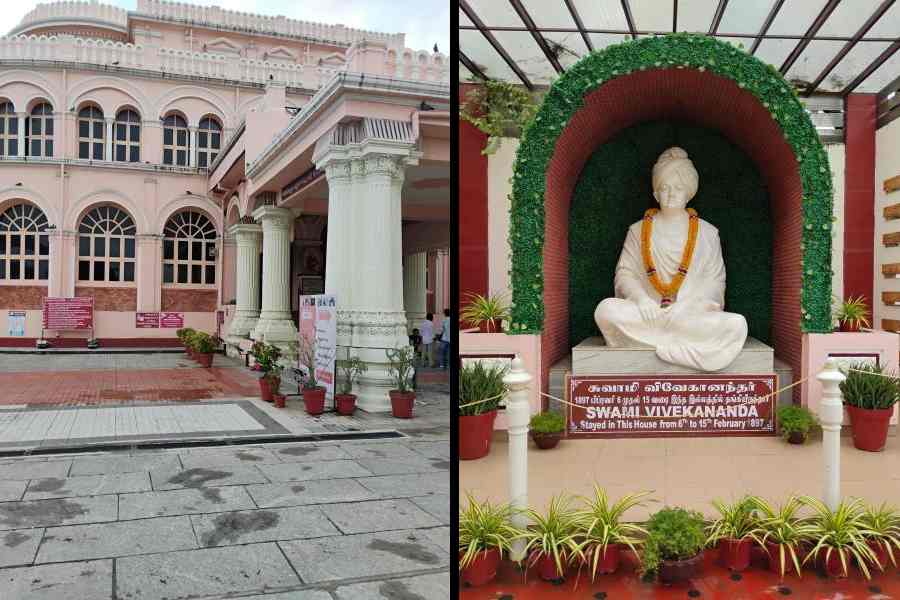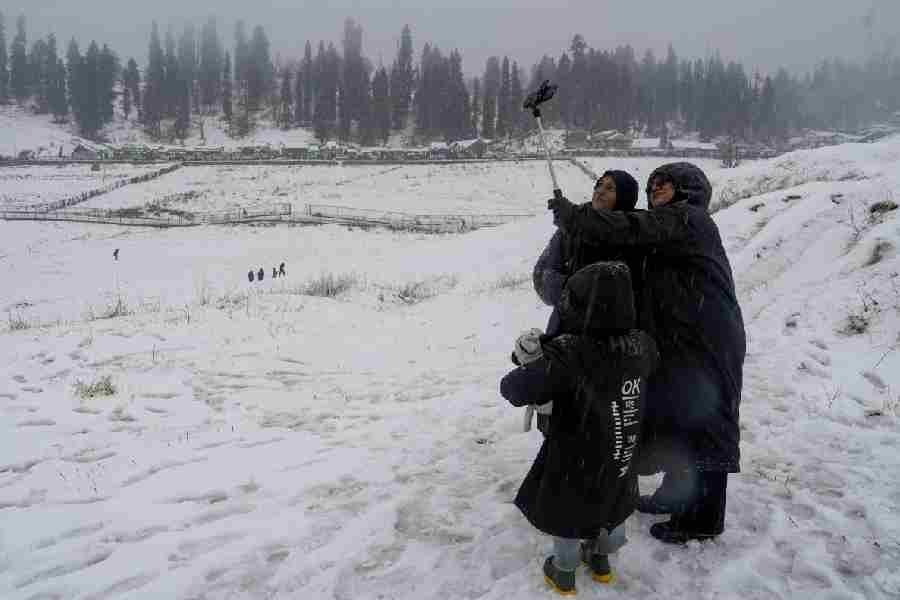



Diwali or Kali Puja - as it is known in Bengal - used to be the best of times for the villagers of Champahati. The last few years though, it has been the most uncertain. This firecracker hub located in South 24-Parganas has not only had to suffer the blows of competition, but also learn to negotiate past this ban and that ban, and the environment police.
But Champahati has survived, so far.
The moment the car swerves off Diamond Harbour Road and heaves itself onto the narrow muddy village track, big and small shops on either side come into view. They all sell firecrackers. Adjacent to some of them, there are makeshift stalls displaying Champahati's plenty, from the humble phuljhari to the fancy swarnabrishti - the same that first leaps into the sky and then rains golden sparkles. Local products rub shoulders with known brands.
Kali Puja is at the time a fortnight away. One retailer has come from Garia in south Calcutta. He is buying firecrackers by the cartload. He tells us that Champahati is the cheapest wholesale baaji (Bengali for firecracker) market in the whole state. In a day or two, there will be a baaji mela here, more retailers will flock to the place.
As the shopkeeper disappears to fetch something from the connecting room, a soft voice whispers, " Didi, kichhu lagbe?" Like the melody of a sputtering kalipatka, the names of popular firecrackers trip off the tongue of the manling - he is not more than 12 years of age. What about chocolate bombs? He stretches his brown hands as far as possible and mimes plenty. Then, having cast his spell, the little strategist turns Pied Piper.
Huffing and puffing behind him through what seems like an interminable length of time, we cross rows of palm trees, a pond or two covered with water hyacinths... If Champahati took its name from the beauteous champa or frangipani, there is none in sight today. No sooner than we get to a two-storey corner house, the little monkey hops and skips his way to the stand-alone room on the terrace.
When we get there, it is as he promised. The room is stacked to the ceiling with crackers, even the noisy variety, the kind that supposedly disappeared from the state two years ago, after the West Bengal Pollution Control Board capped the noise level for Diwali at 90 decibels.
Turns out that the boy's father and uncle make these bombs out of their own homes with the help of their families. It makes sense now why he had paused abruptly midway to ask - " Poolish na to?... You aren't the police, are you?"
In Champahati, everyone is an ashen silver. It comes from spending long hours working with barium chloride. The place smells of barud or flashpowder - integral to pyrotechnic devices - and so do the people. Is there no physical discomfort? Itchiness, perhaps, from all those chemicals? One thing is for sure, even if there is, no one is telling us. No one is willing to talk safety measures either.
Srikumar Naskar is sorting rangmashals in his backyard. Lending him a hand is his wife. Between them, they are carefully rolling paper on hollow tubes, filling them with sand, followed by a mixture of barium and magnesium - which they call mashla - sealing them, drying them in the sun and then preparing neat little bundles of 10. Srikumar's eight-year-old son is watching his father intently. He tries to pour sand into a rangmashal shell his mother has given him.
Srikumar's brother Kanai is also in this line of work. The Naskars, whose mainstay was bombs, switched to rangmashals and charkis post the government ban. "We make almost 1,000 rupees per day during these two months. But we have to sell through the middleman. He offers us a rupee's margin on every pack," says Srikumar.
A few houses down the road, Gautam Adhikari is making sparklers on his terrace. There's one large raised platform with a mould fitted on top of it. It is filled with more of that silvery mashla everyone seems to be bathed in. On the floor are these contraptions that resemble beds of nails, the kind you associate with fakir lore. These are actually trays fitted with metal filaments.
Gautam picks up one and with the filament side down, dunks it into the tub of mashla and pulls it out. The filaments - there are a 1,000 to a tray - are now thick with chemical. Once they dry, you would have a whole batch of phuljharis ready.
We learn from Gautam that though both men and women of Champahati make crackers, the women are paid less. "Womenfolk help with the rolling and the sorting and the packaging. But the mixing of the chemicals, getting the measures correct, the artistry behind crackers is all done by the men."
If there is a cracker hierarchy in Champahati, then Arjun Mondal is several notches above the Gautams and Srikumars. He is a licensed maker of crackers and even owns a factory, a little away from the village. He has 35 people working for him. Mondal, who supplies crackers to Siliguri, Jalpaiguri, Durgapur and Burdwan districts, complains that the Bengal government has clipped the wings of the cracker-makers of Champahati, but continues to allow sellers from other states to do business here.
Mondal also talks about the non-availability of bank loans and government incentives despite the fact that this business comes under the small-scale industry segment. "It feels like we are criminals," says Arjun. And adds, "But the same industry is thriving in Tamil Nadu. Some of the companies there have a turnover of Rs 2.5 to Rs 3 crore annually." He is thankful that for some "mysterious" reason Chinese crackers have not found their way into the market this year.
It is from him we learn that the banned noisy crackers are the ones that earned the big bucks. "They are used all year round - to scare away wild animals; during sporting events, wedding processions, parties... Alor baji to Diwali gelei sesh... The firework stuff is as shortlived as Diwali itself," he says.
As we get ready to leave the village, we spot our little usher lurking around with a bicycle twice his size, possibly on the lookout for potential buyers. A handshake, a quick exchange of smiles, a bar of chocolate and a parting question. What does he want to be when he grows up? " Poooolish," he whispers and wobbles away.
Cracker Facts
• The Supreme Court just banned the sale of firecrackers across the National Capital Region with an eye on pollution levels
• China is possibly the birthplace of crackers; they are still very popular there
• Banned in Hong Kong; legal only in some cities of Indonesia; Malaysia smuggles them from Thailand and
the Philippines; in Vietnam only displays organised by the government are allowed
• Norway banned rockets in 2009, and for the longest time Sweden allowed only rockets
• In UK, firecrackers are illegal, and they are not permitted in Ireland either
• In the US, rules vary from state to state. In 2007, New York City lifted the ban on firecrackers. It was followed by a grand display in which 3,00,000 of them went off










